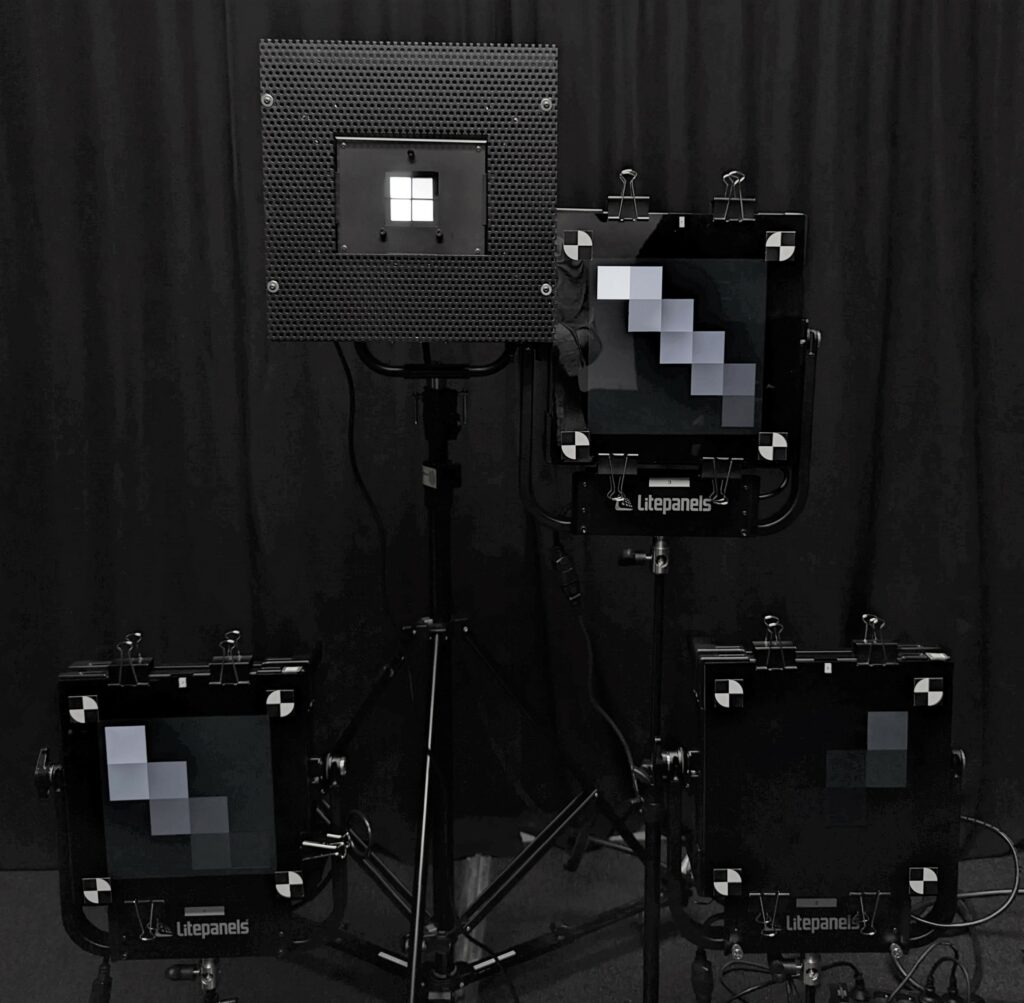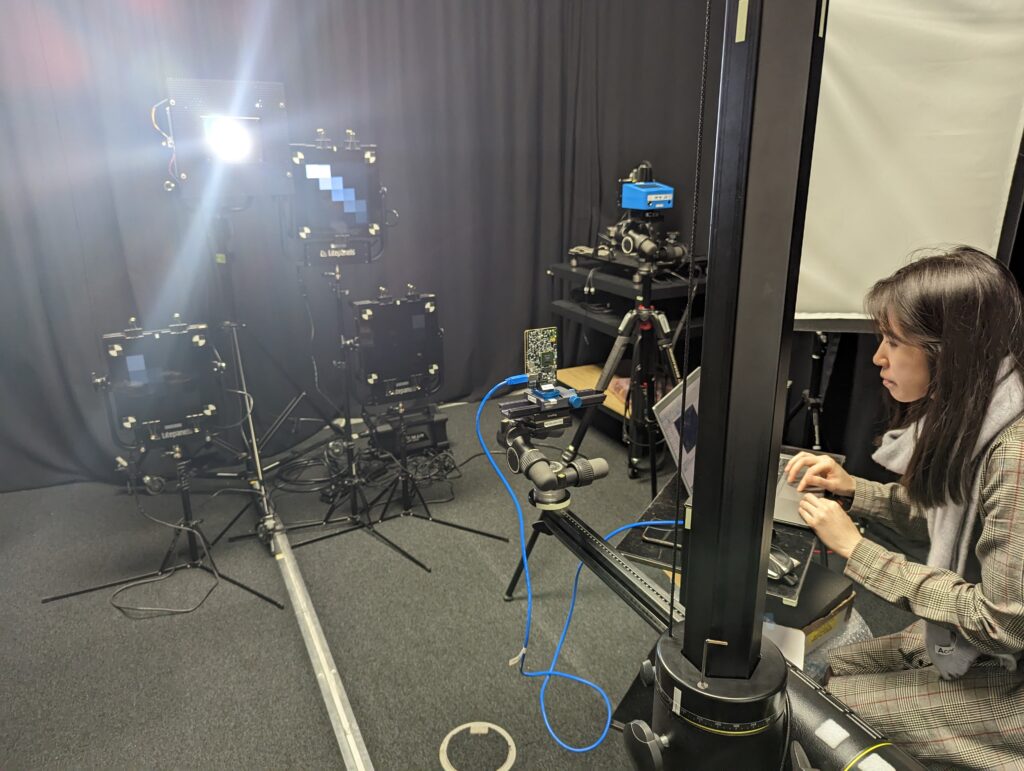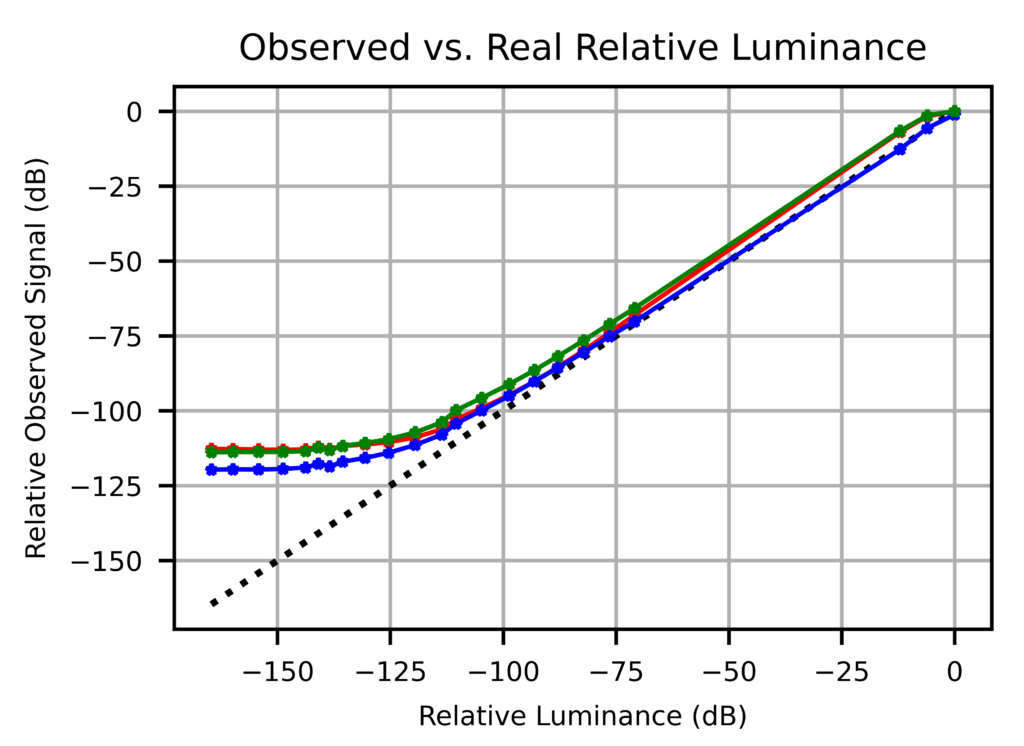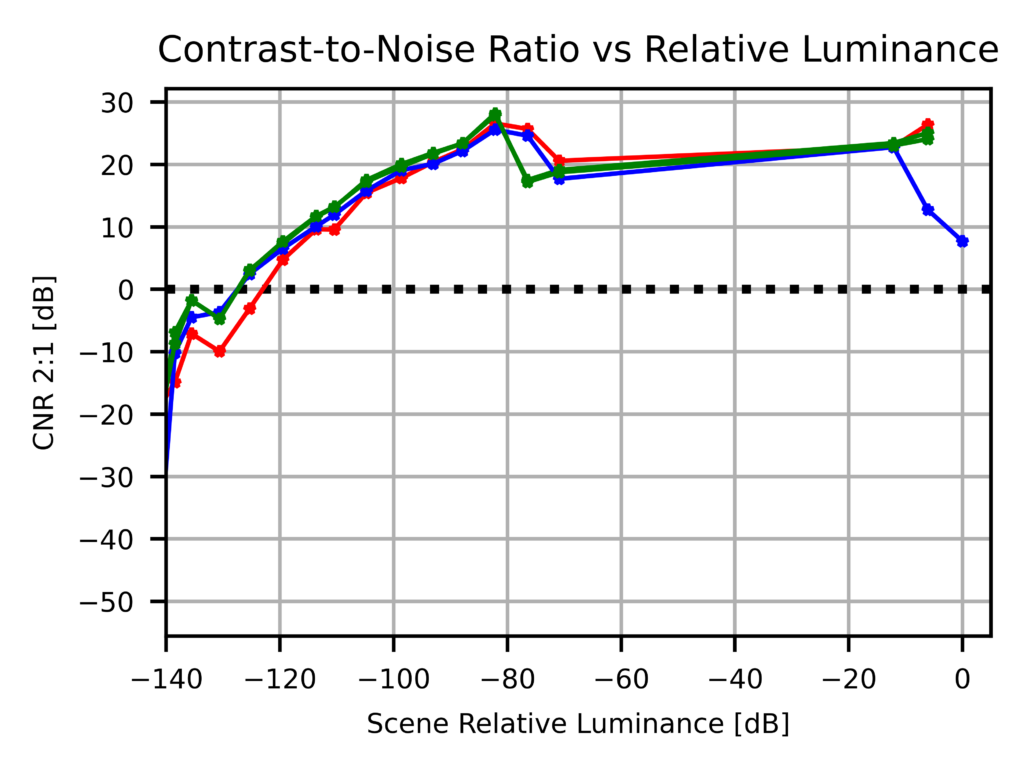Key metrics:
- Observed & real relative luminance
- Contrast-to-noise ratio (CNR)
- Tonal contrast gain (TCG)
- Contrast dynamic range (CDR)
This setup can saturate any sensor!
The image sensor sector is booming, especially in new markets such as autonomous cars. Such applications require higher performance — for example, a very high dynamic range. However, obtaining repeatable and rigorous measurements of these new capabilities is very complex.
We at DXOMARK follow these improvements by participating on scientific committees such as IEEE and ISO. In close collaboration with the industry and the P2020 committee, we have developed a dynamic range measurement setup that can measure 150 dB or higher in one frame, thus meeting the requirement of the standard.
Our setup consists of 4 light panels whose intensity and spectrum can be controlled separately. High-quality test patterns complement the light panels and allow for high-precision measurements. The brightest panel can reach 1.5 million cd/m², saturating all sensors currently on the market.
General specifications:
- Size: 1200 x 1200 x 800 mm
- Power supply: 100–240 V, 50–60Hz
- Total maximum power: 1800 W
Technical specifications:
- 4 separated light panels
- Dynamic range: 0.002 to 1 500 000 cd/m²
- Max luminance: adjustable between 40 000 cd/m² and 1 500 000 cd/m²
- CCT: 5600 K
- CRI > 95
Key features:
- Up to 177 dB
- Flicker-free (DC-driven)
- Computer control (DMX or Arnet)
- Full automatic measurements
- Support for RAW images up to 32 bits/pixels
- Reference: AHDR150_001







